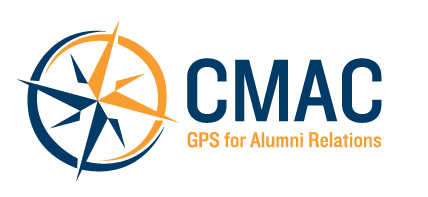The Alumni Engagement Reckoning: Adapt or Be Left Behind
Alright, I will start this article with an alarmist statement. I’m worried about all my fellow alumni engagement pros working in education.
My concern is that the macro-environment is really in flux right now. Funding sources may dry up. Budget cuts are almost certainly coming, and too many college presidents and advancement VPs see their alumni program as a cost center.
That’s bad, but we can do something about it.
I see philanthropy-focused engagement as essential for fundraising success, but I fear that alumni teams are not pushing themselves to become more effective and necessary components of the advancement operation.
Here are three questions that all alumni engagement pros should be asking themselves as it relates to their events, programs, and initiatives. (Of course, these aren’t the only three questions to consider, but these are a definite start.)
What philanthropic message are we communicating using our upcoming events and programs as a vehicle?
Sometimes, as alumni professionals, we get complacent and don’t think beyond the types of events that will draw a crowd. We forget that the point is not to register people but to communicate a message about philanthropy.
Assuming that the alumni team is part of advancement, something that’s true at almost all educational institutions, then events should contain a message about being part of a philanthropic community. Perhaps the message is one of stewardship or to celebrate a campaign. Maybe the message is about a particular fund or upcoming giving initiative. Alumni teams must go beyond considering the topic, theme, or location of an event or program and consider what message about philanthropy they will convey. The philanthropic message should not be an afterthought; it should be planned from the outset.
By the way, a message celebrating or talking up the importance of volunteerism is a message about how attendees can engage more deeply with the institution. We know that volunteers give more and more often, so in my mind, communicating this value of philanthropy as a gift of time is a key ingredient.
Who should be in the room or participating in the program, and how do we get them there?
If I were an alumni professional working earnestly to ensure my unit is not viewed as a cost center, I’d focus on unassigned donors. At every event, I’d set goals for participation and measure success not by attendance writ large but by the number of unassigned donors we get in the room.
The success of today’s campaign doesn’t hinge on engaging alumni who have never given before. Instead, to position my engagement team as a key driver of the campaign’s success, I’d take a different approach. Simply sending marketing emails or posting on social media won’t cut it—we need a more intentional strategy. It’s an all-hands-on-deck effort where alumni team members are each assigned a portfolio of unassigned donors, with a clear goal: not just to invite them, but to actively foster their ongoing involvement
If I’m an alumni leader operating in today's uncertain world, I’d be all about showcasing my team’s prowess in getting the segment of graduates involved that will be instrumental in fundraising success, and that’s unassigned donors.
What’s the conversion we’re trying to facilitate? What do we want our participants, particularly unassigned donors, to do next?
Alumni teams often execute events, programs, and initiatives without a “next” in mind. At Homecoming, we should be recruiting ambassadors for Giving Day. Our attendees at professional-themed events need to sign up to be volunteers working in support of experiential learning initiatives.
We need QR codes to promote an exciting upcoming program at our regional events.
You get the idea. Everything needs to connect.
As part of the planning process and to measure success, I’d establish goals for converting the unassigned donors into opportunities for deeper involvement. Volunteers can help with this, too.
Bottom line: Alumni teams need to make themselves more valuable and view their work with a “development lens.”
Alumni leaders must take proactive steps to ensure their efforts are fully integrated into generating philanthropic support. There is no time or money to waste worrying about being all things to all alumni. I know! That stings a bit.
In a perfect world, alumni teams could and should be thinking about engagement over the following decades, not focusing solely on today’s philanthropic challenges like a laser. But I want alumni teams to stay relevant and to keep their jobs. It’s the world we live in.
I welcome your thoughts and comments.
Ryan Catherwood serves as Executive Vice President and Senior Consultant at Chris Marshall Advancement Consulting (CMAC), consulting partner with Washburn & McGoldrick LLC, and co-host of the Alumless and Alumless World web series and podcasts.








